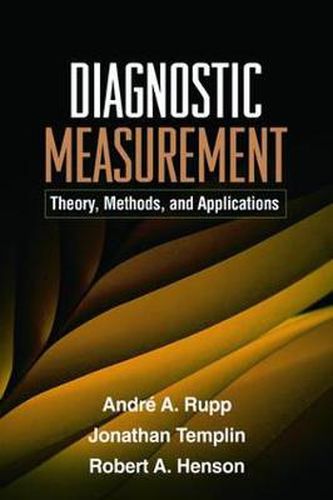Readings Newsletter
Become a Readings Member to make your shopping experience even easier.
Sign in or sign up for free!
You’re not far away from qualifying for FREE standard shipping within Australia
You’ve qualified for FREE standard shipping within Australia
The cart is loading…






This book provides a comprehensive introduction to the theory and practice of diagnostic classification models (DCMs), which are useful for statistically driven diagnostic decision making. DCMs can be employed in a wide range of disciplines, including educational assessment and clinical psychology. For the first time in a single volume, the authors present the key conceptual underpinnings and methodological foundations for applying these models in practice. Specifically, they discuss a unified approach to DCMs, the mathematical structure of DCMs and their relationship to other latent variable models, and the implementation and estimation of DCMs using Mplus. The book’s highly accessible language, real-world applications, numerous examples, and clearly annotated equations will encourage professionals and students to explore the utility and statistical properties of DCMs in their own projects. The companion website, http://projects.coe.uga.edu/dcm , features data sets, Mplus syntax code, and output. This book will appeal to professionals in the testing industry; professors and students in educational, school, clinical, and cognitive psychology. It will also serve as a useful text in doctoral-level courses in diagnostic testing, cognitive diagnostic assessment, test validity, diagnostic assessment, advanced educational measurement, psychometrics, and item response theory
$9.00 standard shipping within Australia
FREE standard shipping within Australia for orders over $100.00
Express & International shipping calculated at checkout
This book provides a comprehensive introduction to the theory and practice of diagnostic classification models (DCMs), which are useful for statistically driven diagnostic decision making. DCMs can be employed in a wide range of disciplines, including educational assessment and clinical psychology. For the first time in a single volume, the authors present the key conceptual underpinnings and methodological foundations for applying these models in practice. Specifically, they discuss a unified approach to DCMs, the mathematical structure of DCMs and their relationship to other latent variable models, and the implementation and estimation of DCMs using Mplus. The book’s highly accessible language, real-world applications, numerous examples, and clearly annotated equations will encourage professionals and students to explore the utility and statistical properties of DCMs in their own projects. The companion website, http://projects.coe.uga.edu/dcm , features data sets, Mplus syntax code, and output. This book will appeal to professionals in the testing industry; professors and students in educational, school, clinical, and cognitive psychology. It will also serve as a useful text in doctoral-level courses in diagnostic testing, cognitive diagnostic assessment, test validity, diagnostic assessment, advanced educational measurement, psychometrics, and item response theory